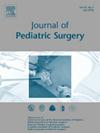Clinical Characteristics and Outcomes of Neonatal Hepatoblastoma: A Single Center Study
IF 2.4
2区 医学
Q1 PEDIATRICS
引用次数: 0
Abstract
Objective
Hepatoblastoma (HB) diagnosed within one month following birth qualifies for a diagnosis of neonatal HB, whose prognosis is reportedly controversial, and its treatment is challenging. This study discussed the diagnosis, treatment, and outcomes of neonatal HB at a single center so as to enhance its overall management in the future.
Methods
The clinical information of babies diagnosed with neonatal HB at our center from August 2009 to September 2023 were retrospectively analyzed for demographics, clinical features, therapy, and outcomes. The outcomes were estimated by the Kaplan–Meier analysis method.
Results
The study comprised 79 patients aged less than one year old, among which 14 had neonatal HB whereas 65 were non-neonatal HB patients. No differences were found between groups regarding gender, birth weight, delivery details, parental age, clinical signs, or treatment strategies. Neonatal HB patients were more likely to have PRETEXT I-II, smaller tumor size, congenital diseases, and lower risk tumor grade (p < 0.05). Additionally, the AFP levels of all neonatal HB patients were greater than 10,000 ng/ml (p = 0.009) and they had higher levels of ferritin (p = 0.003) and hemoglobin (p = 0.021), but lower levels of serum total proteins (p = 0.001). The three-year survival rate (100% vs 90.8%) and three-year event-free survival rate (100% vs 86.2%) in the neonatal HB group were higher than the non-neonatal HB group.
Conclusion
Neonatal HB patients have unique clinical features and can achieve an excellent prognosis following combined treatment with surgery and chemotherapy. Tumor resection, when carefully performed, was safe even in babies younger than one months old. Further and long-term studies are needed from a larger neonatal HB population.
Level of Evidence
Level III.
新生儿肝母细胞瘤的临床特征和预后:一项单中心研究
出生后一个月内确诊的肝母细胞瘤(HB)符合新生儿 HB 的诊断标准,但其预后据报道存在争议,治疗也极具挑战性。本研究探讨了单个中心对新生儿 HB 的诊断、治疗和预后情况,以便今后加强对其的整体管理。本研究回顾性分析了本中心自 2009 年 8 月至 2023 年 9 月期间确诊为新生儿 HB 的婴儿的人口统计学、临床特征、治疗和预后。研究结果采用 Kaplan-Meier 分析方法进行估算。该研究包括 79 名年龄小于一岁的患者,其中 14 人患有新生儿结核病,65 人为非新生儿结核病患者。两组患者在性别、出生体重、分娩细节、父母年龄、临床症状或治疗策略方面均无差异。新生儿 HB 患者更有可能患有 PRETEXT I-II、肿瘤体积较小、先天性疾病和风险较低的肿瘤分级(P<0.05)。此外,所有新生儿 HB 患者的 AFP 水平均高于 10,000 纳克/毫升(P=0.009),他们的铁蛋白(P=0.003)和血红蛋白(P=0.021)水平较高,但血清总蛋白水平较低(P=0.001)。新生儿 HB 组的三年生存率(100% vs 90.8%)和三年无事件生存率(100% vs 86.2%)均高于非新生儿 HB 组。新生儿 HB 患者具有独特的临床特征,在接受手术和化疗联合治疗后,可以获得良好的预后。即使是对小于 1 个月的婴儿进行肿瘤切除手术,如果操作谨慎,也是安全的。还需要对更多的新生儿 HB 患者进行进一步的长期研究。三级
本文章由计算机程序翻译,如有差异,请以英文原文为准。
求助全文
约1分钟内获得全文
求助全文
来源期刊
CiteScore
1.10
自引率
12.50%
发文量
569
审稿时长
38 days
期刊介绍:
The journal presents original contributions as well as a complete international abstracts section and other special departments to provide the most current source of information and references in pediatric surgery. The journal is based on the need to improve the surgical care of infants and children, not only through advances in physiology, pathology and surgical techniques, but also by attention to the unique emotional and physical needs of the young patient.

 求助内容:
求助内容: 应助结果提醒方式:
应助结果提醒方式:


